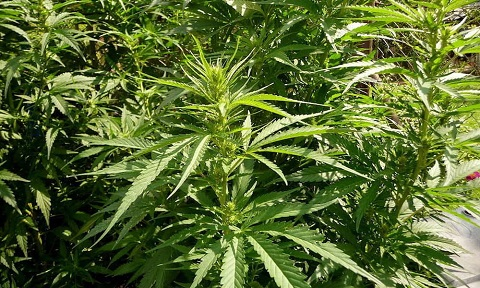Hemp as a Source of Eco-Friendly Plastic
According to the latest report from the Center for Environmental Law, the production and use of various plastic polymers generate pollution each year equivalent to the emission of 850 million tons of carbon dioxide. Analysts from this international agency estimate that, at the current rate of plastic polymer consumption and production, by 2050 this industry will be responsible for about 14% of all global pollution related to carbon dioxide and similar emissions. Even now, it is clear that while plastic polymers are convenient to use and manufacture, they consume the Earth’s non-renewable resources and release a large amount of pollutants, further worsening the planet’s environmental situation.
However, despite these facts, it is quite possible that with a small modification to plastic polymer production technology, this highly toxic and non-biodegradable material could become completely safe for the environment. The key lies in using hemp fibers as a new base for producing various types of plastic. Plastics made from plants would be stronger, less expensive to produce, and would lose their characteristic toxicity.
The Role of Cellulose in Plastic Production
Currently, the technology of using cellulose and hydrocarbon compounds—found in all vascular and connective tissues of woody plants—for producing synthetic polymers is well known and widespread worldwide. Biologically, cellulose forms the skeleton of plants, providing both high strength and flexibility. This allows plant stems to withstand environmental stress and adapt their growth. Thanks to these properties, processed cellulose extracted from plants is extremely pliable yet durable, making it suitable for a wide range of uses—from skincare cosmetics to strong polymer sheets for construction and engineering.
Hemp: A Promising Alternative
Some companies, such as Canopy Corporation—one of the world’s largest legal hemp producers—hope that with the global revival of hemp cultivation, hemp fibers will become a reliable raw material for most of humanity’s needs in plastics and liquid fuels. Experts note that, unlike many other crops, hemp contains a very high concentration of cellulose. Combined with its low cultivation requirements and rapid growth, hemp is extremely cost-effective as a raw material for plastics. Unlike petroleum, plants are a renewable resource that does not require significant environmental modification for effective exploitation, making hemp a potentially attractive alternative for producing polymers and fuels.
Challenges in Adopting Hemp-Based Plastics
So why are many companies, even in regions where industrial hemp cultivation has been revived, slow to use hemp fibers as a replacement for fossil carbons? Analysts say the main reason is the difficulty of converting existing production lines to use a new resource. For example, Coca-Cola experimented with switching one of its plants to hemp-based plastic in early 2015. Although hemp fibers are a much cheaper substitute for carbon-based resources in making plastic bottles, the transition to a fundamentally new technology required massive investments of time and money due to the near-total replacement of equipment. If a giant like Coca-Cola found the project “costly,” it is likely that smaller companies would risk bankruptcy if they attempted such a transition. While simplifying and reducing the cost of technology for making hemp-based plastics may soon make these expenses acceptable even for small, family-run businesses, for now, this technology remains more niche than commercial.
Current Uses and Future Potential
It is worth noting that not only cannabis companies are using hemp fibers as a raw material for plastic production. The automotive industry—including Ford, GM, Chrysler, Saturn, Honda, BMW, and Mercedes-Benz—has been using composite materials made from industrial hemp fibers for several years to assemble door panels and trunk linings. Manufacturers explain that this technology is not only more economical but also a greener alternative to traditional plastics.
Experts also see great potential in replacing all currently used materials for making various plastic dishes with their biodegradable equivalents made from organic plant fibers. Such technologies could help humanity solve the problem of accumulating plastic waste, especially packaging materials, which are used only to protect other products from the environment but account for about 40% of all plastic waste produced annually. Several companies are actively working to implement these developments, including Sana Packaging in Denver, which produces various types of hemp-based packaging for the industry, and Hemp Plastic Company, also in Denver, which makes similar products for other sectors.
A Technology with Deep Roots
It is important to remember that hemp-based plastic is not a new technology. Henry Ford built the first car from composite materials made from cellulose mass processed from industrial hemp back in the mid-1940s. This vehicle could rightfully be called the first true “eco-car,” as not only were all its parts made from plant material, but it was also fueled by purified hemp oil derived from processing the plant into cellulose. In other words, while skeptics may doubt the imminent arrival of “innovative” hemp-based technologies, they forget that the remarkable properties of this plant have been known to humanity for a long time. Many of today’s environmental problems might have been avoided entirely if hemp had not been globally banned for nearly a century.



